Table of contents
Breadcrumbs, also known as bread crumbs, are grated or ground dry white bread. They are used as a coating for various foods to give them a golden crust after frying or baking.
Use in the kitchen
What are breadcrumbs made of? Breadcrumbs are made from dry bread by grinding it, which is why they are not raw. They contain flour (from wheat or spelt ), salt ( sea or table salt ), yeast and sometimes oil (usuallysunflower oil ). Healthier versions contain wholemeal groats or cereal bran . Breadcrumbs made from rusks can contain milk, eggs, butter or margarine in addition to the ingredients listed above.
Breadcrumbs can be used to gratinate casseroles or to give them a crust. In addition to being used for savory dishes, toasted and sweetened breadcrumbs can also be used for desserts such as fruit dumplings ( apricots, plums ), in apple strudel, as a crumble or when baking cakes as a separating agent between the greased cake tin and the cake batter. In Polish cuisine, breadcrumbs are used in the polonaise, a garnish for vegetables, especially cauliflower . Panko is the Japanese version of breadcrumbs, which consists of ground, crust-free white bread.
However, breadcrumbs are mainly used for breading meat (schnitzel), fish or vegetables. This creates a crispy outer layer that keeps the inside juicy. A classic speciality is the Wiener Schnitzel, which consists of veal. For a vegan schnitzel, you can use soy medallions, celery, kohlrabi ( baked kohlrabi schnitzel ) or oat flakes . The breading also works excellently without eggs. As an alternative, mix flour and water in a ratio of 3:1.
Another classic of Viennese cuisine is plum dumplings, called plum dumplings with a "k". Plum dumplings are a type of pastry that is sprinkled with breadcrumbs and is often found in Austrian, Hungarian and Czech cuisine. Other popular fillings are strawberries, apricots, cherries or nougat. There are also more unusual versions with figs or mangos, which provide an exotic taste profile.
Breadcrumbs are also suitable for stuffing vegetables. They give beef tomatoes, peppers, artichokes, zucchini or eggplant a crispy filling and a pleasant texture. The white flour contained in the breadcrumbs also acts as a binding agent. They help to give dumpling dishes, fillings or vegetable patties ( such as the oven-baked vegetable patties with oat flakes and linseed ) a cohesive and firm mass so that they do not fall apart when cooked or fried. Breadcrumbs can also be used as a thickener for soups, stews or sauces.
A healthier alternative is breadcrumbs made from wholemeal bread, which contain more fiber. When cooking, you should use more liquid so that the breading is not too dry. Instead of breadcrumbs, recipes can also use wheat bran, oat flakes, ground flax seeds, hemp seeds and nuts such as almonds or walnuts . Crushed soy flakes, almond flour and chickpea flour are also suitable as low-carb breading. It should be noted that all of these options may not produce the same crispy texture as classic breadcrumbs.
Making your own breadcrumbs
You can also make your own breadcrumbs quickly and easily. Homemade breadcrumbs are popular with chefs because they are said to have a better and finer taste.
Old bread rolls are used to make them. First, cut the old wholemeal bread or white bread, such as baguette or rolls, into small cubes. To make cutting easier, make sure that the bread still has some residual moisture. To dry, store the cubes in a linen bag or cotton bag in a well-ventilated place. To avoid mold formation, use smaller amounts per bag. You can also place the white bread cubes on a baking tray lined with baking paper and let them air dry.
The dried bread cubes are then ground into fine flour in a food processor with a blade attachment, an old coffee grinder or with a hand blender. If you don't have any electrical tools available, you can put the dried bread cubes in a kitchen towel and smash them by hitting them on the kitchen counter. However, this method is outdated and does not prove to be particularly effective. Alternatively, you can grate the dry bread (not cut into cubes) with a vegetable grater, finely or coarsely depending on your preference. 1
Vegan recipe for plum dumplings
Ingredients for 12 dumplings: 800 g floury potatoes, 60 g margarine, 6 tbsp flour, 2 tbsp soy flour, 2 tbsp water, 4 tbsp wheat semolina, 12 plums, 100 g breadcrumbs, 100 g margarine, 1 pinch of salt, powdered sugar for sprinkling.
Preparation: Steam the washed potatoes until soft, then strain, peel and press through a potato ricer. Alternatively, you can mash them or crush them finely with a fork. Add melted margarine, salt, flour, soy flour, water and semolina to the potatoes and quickly knead into a firm dough. Cover and leave to rest for about 10 minutes. You can (but don't have to) carefully remove the stones from the washed plums beforehand. You shouldn't halve them, just carefully cut them. Form the potato part into a roll and cut 1-2 cm slices and wrap them around each plum. The plum should be well sealed.
Bring water to the boil in a large saucepan, add salt and carefully add the dumplings. Leave to simmer for about 10 minutes. The water should no longer be boiling and the dumplings should not be touching each other. In the meantime, melt the margarine in a pan, add the breadcrumbs and fry until golden brown, stirring constantly. Then roll the vegan plum dumplings in the mixture and serve sprinkled with powdered sugar (optional).
For a healthier version, use wholemeal breadcrumbs. In addition to potato dough, yeast, curd or choux pastry are also available. Instead of breadcrumbs, a mixture of ground poppy seeds and caster sugar is used in Bohemia. You can also sprinkle the dumplings with powdered sugar, cinnamon and sugar or with crushed gingerbread crumbs.
Vegan recipes with breadcrumbs can be found under the note: " Recipes that use the most of this ingredient ".
| Not only vegans or vegetarians should read this: Vegans often eat unhealthily. Avoidable nutritional errors . |
Purchasing - Storage
You can find ordinary breadcrumbs all year round in all supermarkets and major retailers such as Coop, Migros, Denner, Volg, Spar, Aldi, Lidl, Rewe, Edeka, Hofer, Globus and Billa, some of which are also organic. Health food stores and organic supermarkets such as Denn's Biomarkt and Alnatura as well as online shops also stock breadcrumbs.
Breadcrumbs are available in various compositions. In addition to the classic breadcrumbs made from wheat, there are also versions made from wholemeal, spelt, corn or rice . Breadcrumbs refined with spices are also available. However, not all supermarkets stock gluten-free or even vegan breadcrumbs.
The ingredients of industrially produced breadcrumbs can vary greatly. They often contain additional salt, sugar, preservatives, flavor enhancers and emulsifiers, and occasionally milk powder or eggs. When buying breadcrumbs, it is therefore advisable to read the ingredients. When shopping, look for vegan, lactose-free breadcrumbs or make them yourself from vegan bread.
The availability of breadcrumbs varies depending on the size of the store, catchment area, etc. You can find our recorded food prices for the DA-CH countries above under the ingredient image - and by clicking you can see their development at different suppliers.
Storage tips
Homemade breadcrumbs will last for months or even years if dried properly in screw-top jars with lids. After opening, store-bought breadcrumbs are best placed in a tightly sealed tin or screw-top jar and placed in a dark, cool place. This will protect the breadcrumbs from pests. Since ground breadcrumbs often contain small amounts of cooking fat or butter, storing them in a place that is too bright and warm can lead to a rancid taste. 2
Ingredients - Nutritional values - Calories
What ingredients does breadcrumbs contain? The energy content of breadcrumbs is 368 kcal/100g. The macronutrients are divided into 79 g carbohydrates, 10 g protein and 2.1 g fat per 100 g breadcrumbs. The high carbohydrate content of breadcrumbs consists of 4.4 g sugar and 5.3 gfiber . The high salt content is striking at 1,016 mg/100g. With a recommended daily amount of 6 g salt, this corresponds to 42.3%. 3
400 mg of the salt is due to the sodium content. This corresponds to about 50% of the recommended daily dose, which is particularly high. Ready-made mixes in particular often contain a lot of salt, which is why homemade breadcrumbs are preferable. Panko is a suitable alternative, which contains 30% less sodium at 280 mg/100g. 3
100 g of breadcrumbs contain around 0.1 g of tryptophan, which is 41% of the daily requirement. Sunflower seeds with 0.35 g/100g and wheat germ with 0.32 g/100g contain 3 times as much of the amino acid. Soybeans and hemp seeds even have 6 times the amount of tryptophan with 0.59 g/100g and 0.61 g/100g respectively. 3
Threonine is contained at 0.3 g/100g. This covers 32% of the daily requirement. Oat flakes, which can be used as a substitute for the breading, contain slightly more threonine at 0.38 g/100g. Almonds and walnuts even contain twice as much at 0.6 g/100g each.Pumpkin seeds at 1 g/100g and hemp seeds at 1.3 g/100g are particularly rich sources. 3
You can find all the ingredients of breadcrumbs, the coverage of the daily requirement and comparison values with other ingredients in our nutrient tables below the ingredient image.
Health Effects
Are breadcrumbs healthy? In general, breadcrumbs are not good for your health. They are mainly a processed product used to enrich taste and texture, not for their nutritional properties. From a nutritional point of view, breadcrumbs, including wholemeal breadcrumbs, have little value. They are high in calories and contain mainly carbohydrates . At the same time, breadcrumbs provide little to no significant amounts offiber, protein, vitamins or minerals. Breadcrumbs should therefore only be consumed occasionally.
The white flour contained in breadcrumbs has a high glycemic index (GI): the value is 85. 4 Eating foods with a high GI leads to a rapid increase in blood sugar levels, which is particularly problematic for people with diabetes or insulin resistance. 5 A low GI value is typically below 55, while a high GI is higher than 70. Wholemeal flour has a GI of 60. 4
A diet with a high glycemic index (GI) can increase the risk of diseases such as obesity (in women), type 2 diabetes mellitus, coronary heart disease (in women) and colorectal cancer. There is also a link between a high GI and the risk of abdominal obesity (visceral obesity), according to an EPIC study. 5
Salt and fat are other products that have a negative impact on our health if consumed in excessive quantities. 6 If you absolutely need breadcrumbs for cooking, it is important to use products that are free of milk, eggs and fat, with whole grain spelt and organically produced. Or, even better, replace it with a healthier option, such as linseed, hemp seeds or ground almonds .
Secondary plant substances
Secondary plant substances are not relevant to the nutritional profile of breadcrumbs. Find out more about the importance and classification of these bioactive substances in food in the article on secondary plant substances .
Dangers - Intolerances - Side effects
Like all wheat products, ordinary breadcrumbs contain the protein molecule gluten and are therefore not suitable for people with celiac disease (gluten intolerance). unsuitable. The symptoms range from mild abdominal pain to diarrhea, constipation, flatulence, vomiting, skin changes, headaches or migraines. 7 Well-stocked supermarkets and specialty stores also sell gluten-free breadcrumbs made from rice, corn, dextrose and salt.
People who are allergic to wheat should also avoid traditional breadcrumbs. If you have a wheat allergy, eating wheat products triggers an immune reaction in which the body produces IgE antibodies against the wheat protein. This can lead to skin rashes, gastrointestinal complaints, breathing problems and, in severe cases, even anaphylactic reactions. 8
A study by the cantonal laboratory in Basel (Switzerland) shows that 6 out of 28 breadcrumbs tested lacked information about allergens. No nut allergens (such as walnuts, cashews, pistachios, Brazil nuts, pecans, macadamia nuts and also peanuts) were found. However, traces of sesame, eggs, milk and almonds were found in some products without any declaration. Hazelnuts, lupins and soya were detected using PCR methods in those products that also contained a corresponding declaration. For sensitive allergy sufferers, the use of industrially produced breadcrumbs can be problematic, even if the quantities detected are below 1 g/kg and thus comply with the law. 9
Although breadcrumbs can contain a relatively high amount of salt, the actual intake depends on individual consumption. Since moderate amounts are typically used, the salt content in breadcrumbs is generally not harmful to health as part of a balanced diet. However, it is advisable to check the ingredient list and choose varieties with less salt if necessary, or use homemade breadcrumbs without salt if a low-salt diet is required.
Too much salt is unhealthy. According to the WHO ( World Health Organization ), the guideline for healthy adults is 2 g of sodium or 5 g of salt per day. For comparison: a level teaspoon of salt weighs about 5 g. 10 High salt consumption can have negative health effects, such as cardiovascular disease and high blood pressure. 11 For more details and ways to reduce your salt intake, see the articles on salt and sea salt .
When preparing breaded foods, high temperatures and prolonged heat of over 120 °C (frying or roasting) can produce harmful substances through the Maillard reaction. These include HMF (hydroxymethylfurfural), furfural and acrylamide, which are suspected of being carcinogenic. 12,13 This potential health risk should therefore be taken into account when preparing foods that contain breadcrumbs. Also note: the darker the crust, the more acrylamide has formed. 13 Studies also show that not only the frying conditions but also the ingredients used in the breadcrumb formulation are crucial. For example, a particularly high asparagine/reducing sugar ratio promotes higher acrylamide formation under the same frying parameters. 12
Ecological footprint - animal welfare
The ecological footprint of a food depends on various factors. The type of agricultural production (conventional vs. organic), seasonal, regional, domestic production or import by truck, ship or plane, different types of packaging and whether the goods are fresh or frozen all play a decisive role. 14
The Big Climate Database puts the carbon footprint of breadcrumbs from Denmark at 1.5 kg CO 2 eq/kg. 15 According to the Swedish website Carboncloud, goods produced in Thailand cause 1.85 kg CO 2 eq/kg. 16 In 2019, the Institute for Energy and Environmental Research Heidelberg ( IFEU ) examined almost 200 foods in Germany for their environmental impact. The value for white bread is 0.7 kg CO 2 eq/kg and for fine baked goods it is 1.6 kg CO 2 eq/kg. 14
We were unable to find exact figures for the water footprint of breadcrumbs. However, we do have a value of 1608 l/kg for white bread. 17 Since breadcrumbs are often made from dried bread and go through similar manufacturing processes, one can expect a similar order of magnitude for water consumption. The actual water footprint of breadcrumbs can vary depending on the manufacturing method, the origin and type of grain, and other factors.
For information on the ecological impact of wheat cultivation, see the ingredient wheat flour .
For detailed explanations of various sustainability indicators (such as ecological footprint, CO2 footprint, water footprint), see our article: What does the ecological footprint mean?
Worldwide occurrence - cultivation
The use of breadcrumbs has been known for centuries. It originally arose as a way to efficiently reuse old or dry bread. Old breadcrumbs were quickly used to prepare many dishes, especially in rural areas. With industrialization and the increasing availability of bread, the commercial production of breadcrumbs also began. Today, various types of breadcrumbs are available worldwide.
Industrial production
The production of breadcrumbs is now fully automated on an industrial level. The production process involves several steps: The first step involves dosing and adding raw materials such as flour and spices. The mixture is placed on a conveyor belt before a kneader mixes it with liquids and turns it into dough. The dough is then baked and dried, and the baked bread is then chopped and ground into fine or coarse breadcrumbs. The grains can be sieved at the end, depending on the size you prefer. 18
However, technological innovations are constantly being made: for example, extrusion technology offers an alternative to conventional production. Extrusion is a way of combining several process steps such as mixing, kneading, cooking and shaping the dough. 19
Further information
There are different types of breadcrumbs: The classic breadcrumbs, known as American bread crumbs or home style bread crumbs. This type of breadcrumbs is made from bread. Cracker meal consists of crushed crackers and has a finer texture than conventional breadcrumbs. The Japanese bread crumb or Oriental style bread crumb, often also called panko, consists of crust-free white bread. The light, airy crumbs are used primarily in Asian cuisine and provide a tender, crispy crust. 19
Alternative names
The term breadcrumbs is derived from the French word "paner", which means "to sprinkle with grated bread". This also includes grated rolls (white bread). Other names such as breadcrumbs, breadcrumbs, breadcrumbs, breadcrumbs or bread crumbs are also used regionally.
Bibliography - 19 Sources (Link to the evidence)
| 1. | Lebensmittel-Warenkunde: Paniermehl. |
| 2. | Bayerisches Landesamt für Gesundheit und Lebensmittelsicherheit. Paniermehl/Semmelbrösel/Semmelmehl Untersuchungsergebnisse 2005. |
| 3. | USDA (United States Department of Agriculture). Nährwerttabellen. |
| 4. | GI-Handbuch NR. 1 (online). Glykämischer Index von Getreide. 2024. |
| 5. | Verbraucherzentrale: Glykämischer Index (GI) und Glykämische Last (GL). 2023. |
| 6. | BZfE Bundeszentrum für Ernährung: Zu viel Zucker, Fette und Salz können krank machen. 2023. |
| 7. | Öffentliches Gesundheitsportal Österreichs: Zöliakie. 2023. |
| 8. | Öffentliches Gesundheitsportal Österreichs: Allergie auf Getreide. 2023. |
| 9. | Hampe E. Paniermehl und Backmischungen / Allergene und Kennzeichnung. Gesundheitsdepartement Kantonslabor Basel. 2013. |
| 10. | WHO World Health Organization. Sodium reduction. 2023. |
| 11. | Agócs R, Sugár D, Szabó AJ. Is too much salt harmful? Yes. Pediatr Nephrol. September 2020;35(9):1777–1785. |
| 12. | Mesías M, Holgado F, Márquez-Ruiz G, Morales FJ. An investigation of process contaminants’ formation during the deep frying of breadcrumbs using a bread coat model. Food Funct. 2016;7(3):1645–1654. |
| 13. | BLV Bundesamt für Lebensmittelsicherheit und Veterinärwesen. Acrylamid. 2020. |
| 14. | Reinhardt G, Gärtner S, Wagner T. Ökologische Fussabdrücke von Lebensmitteln und Gerichten in Deutschland. IFEU Institut für Energie - und Umweltforschung Heidelberg. 2020. |
| 15. | The Big Climata Database. Bread-crumbs. 2024. |
| 16. | Carboncloud. Bread crumbs. 2024. |
| 17. | Mekonnen MM, Hoekstra AY. The green, blue and grey water footprint of crops and derived crop products. Hydrol. Earth Syst. Sci. 2011;15:1577-1600. |
| 18. | Prozesstechnik.Industrie: Vollautomatische Anlage für die Herstellung von Paniermehl. 2021. |
| 19. | Jämlich K. Herstellung von Extrudaten als Grundlage für Snackprodukte und gemahlenen Zwieback. Bachelorarbeit. Hochschule Neubrandenburg. 2010. |

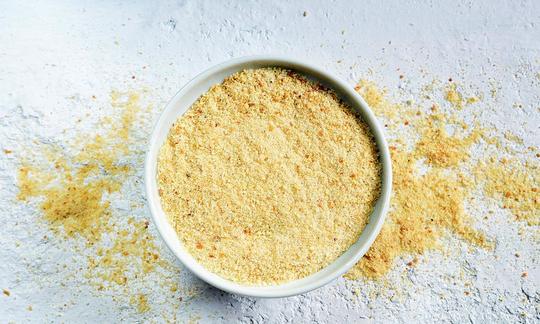

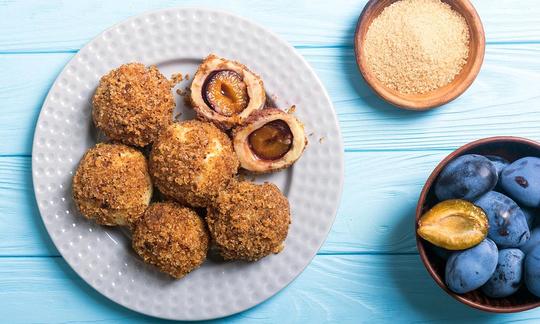

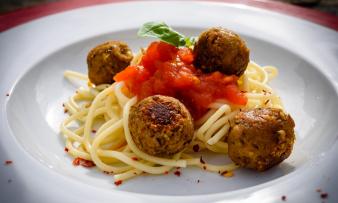
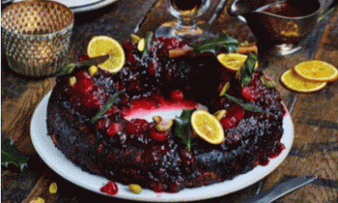
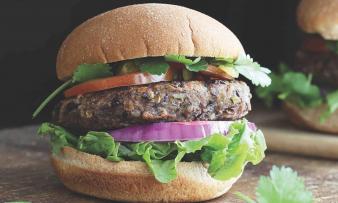





Comments